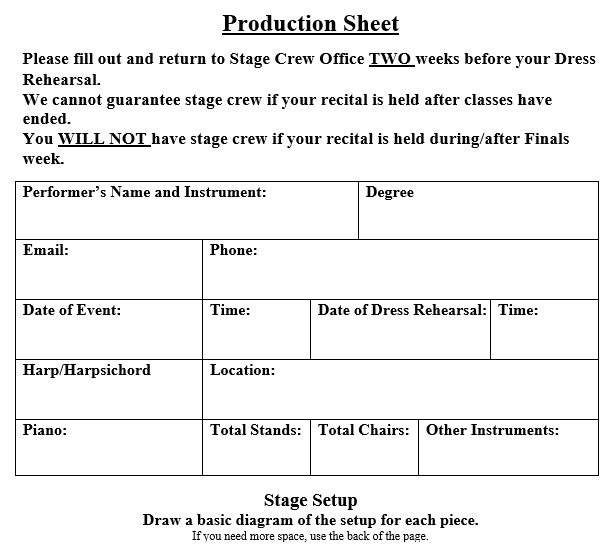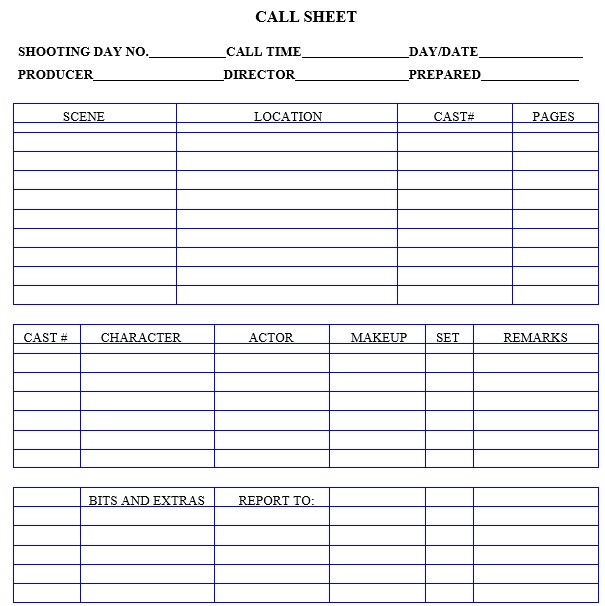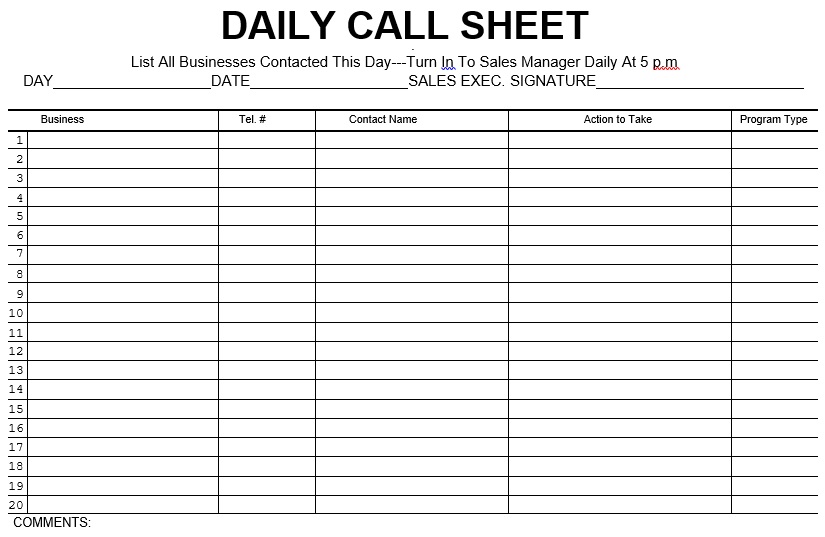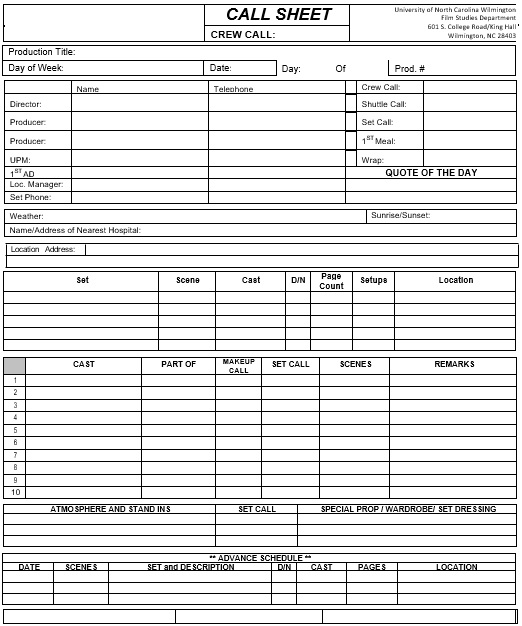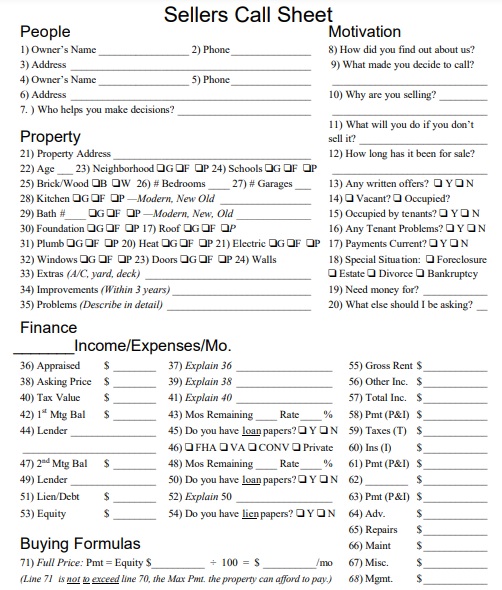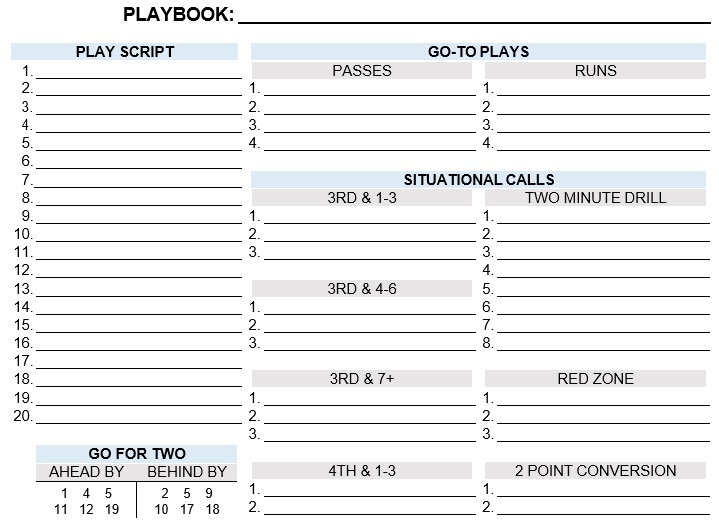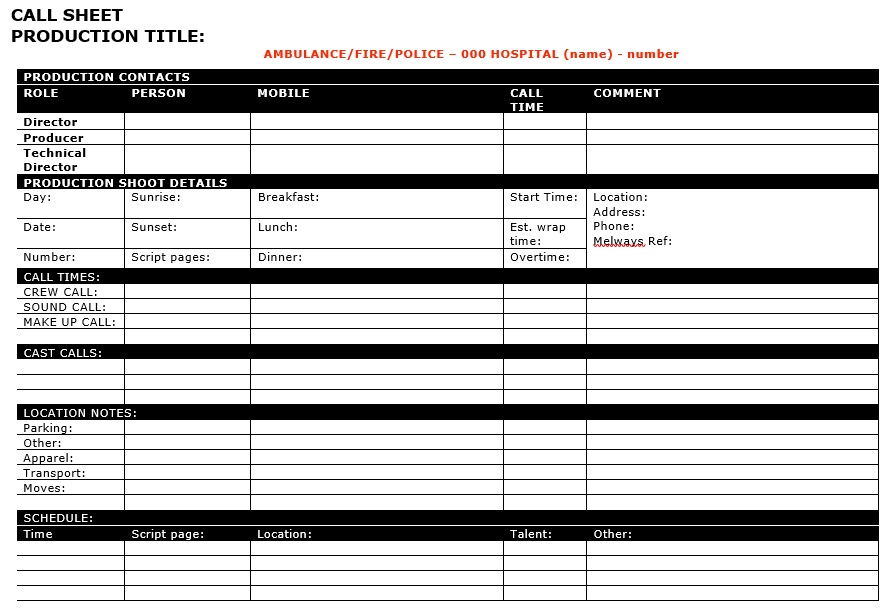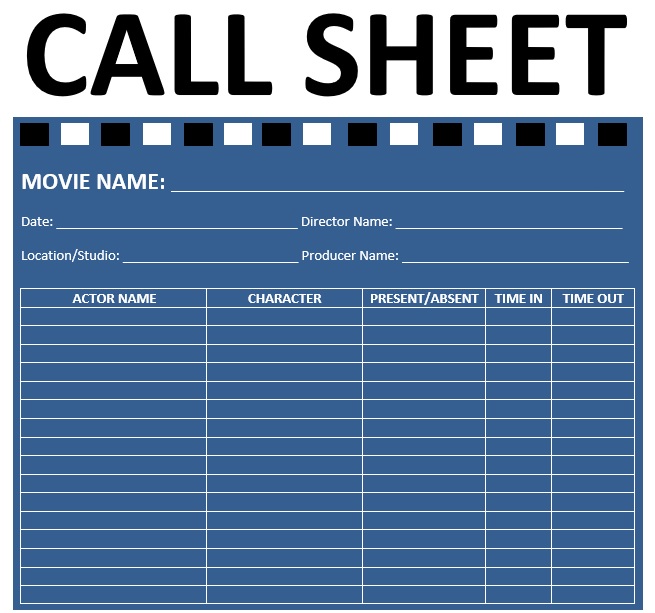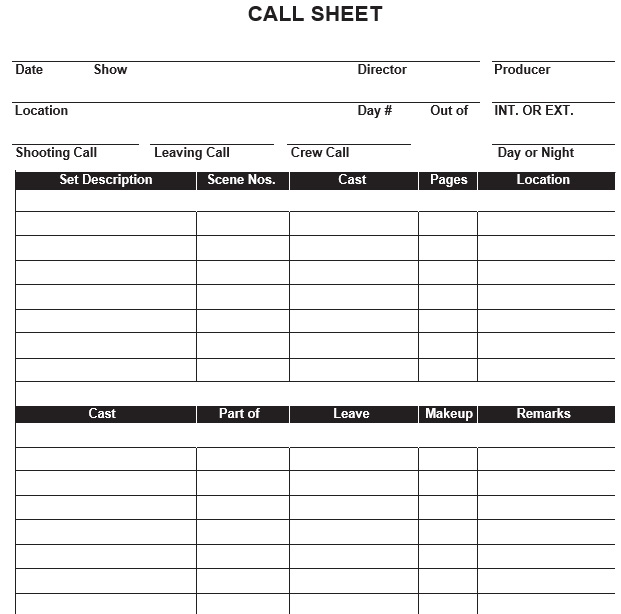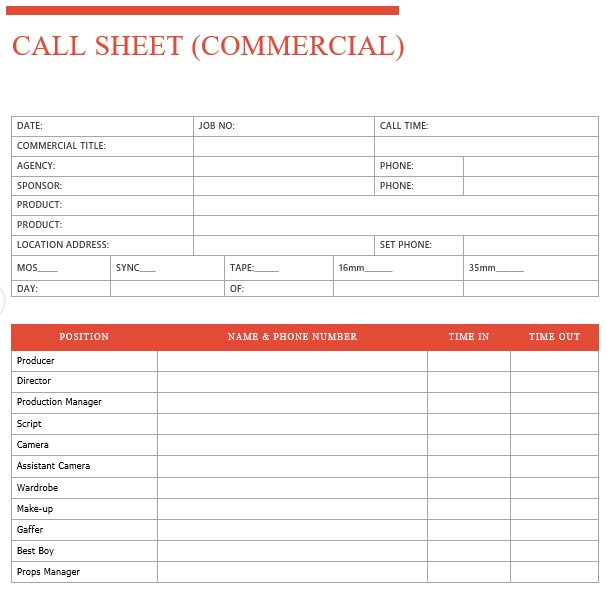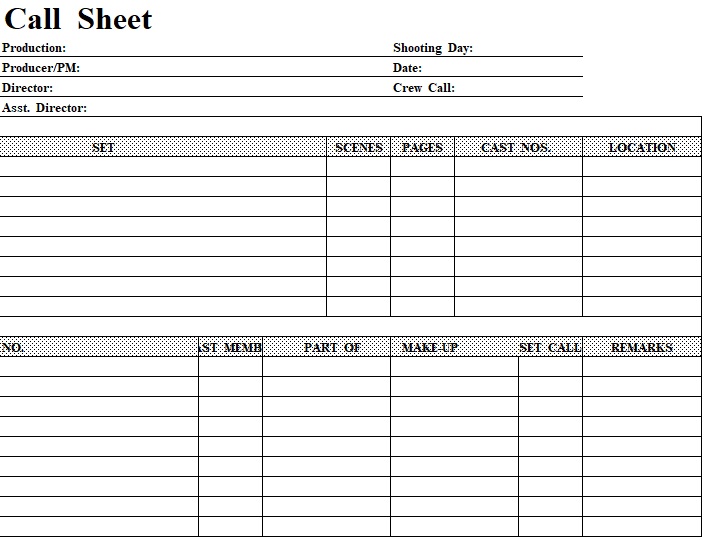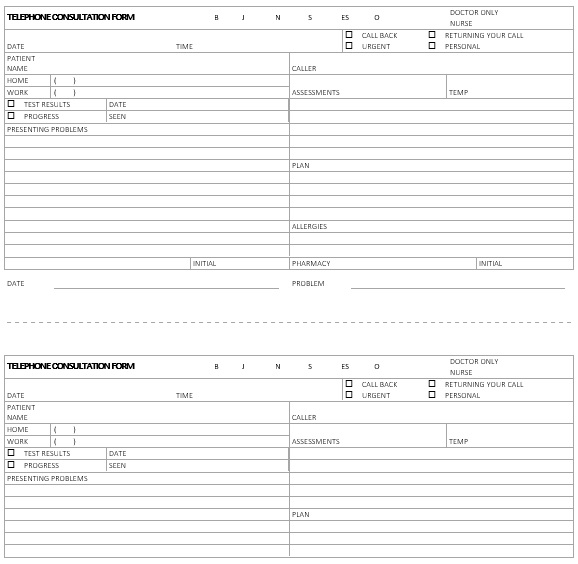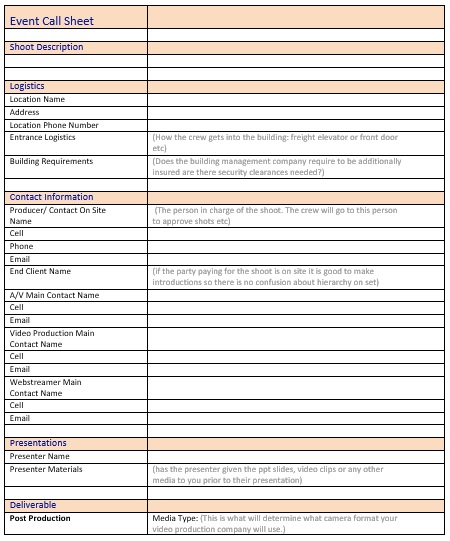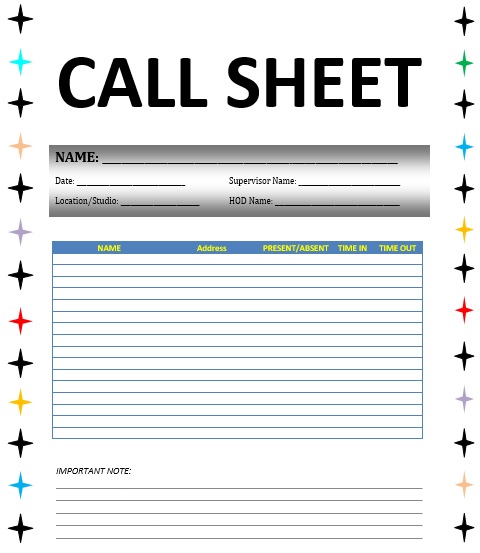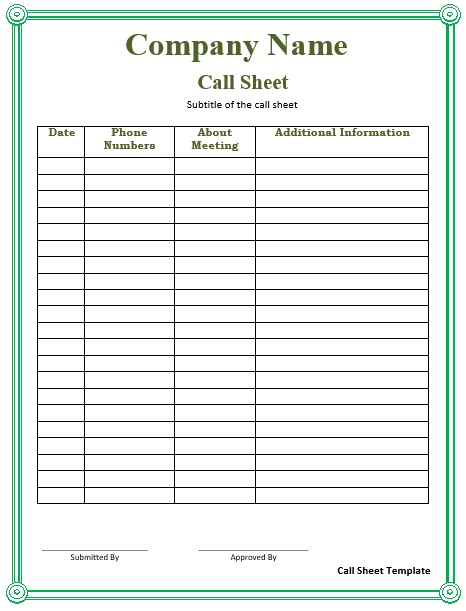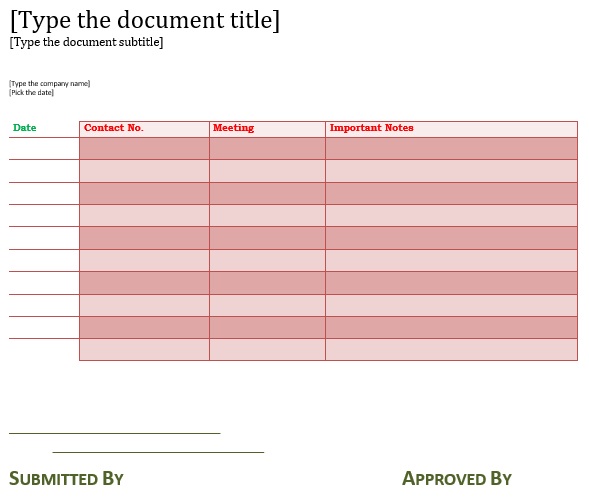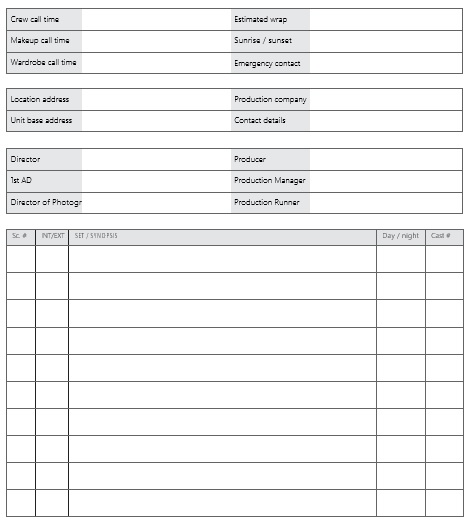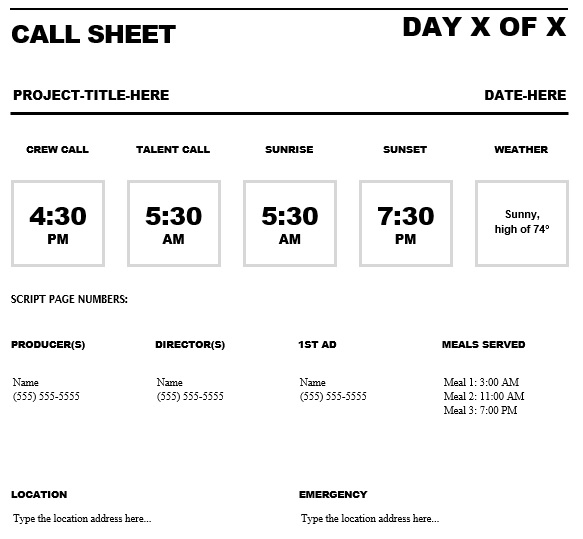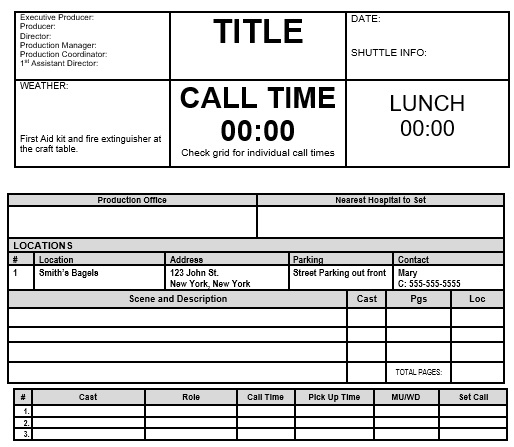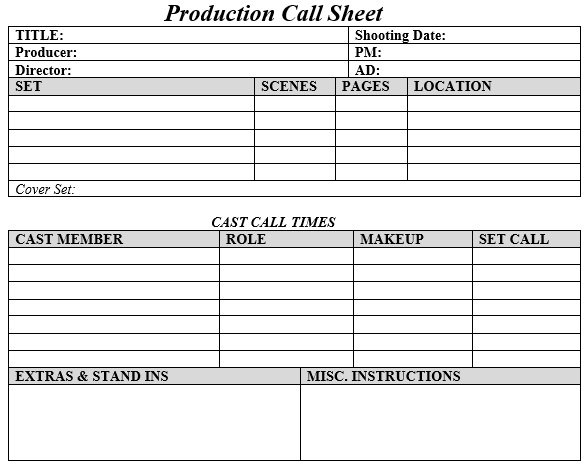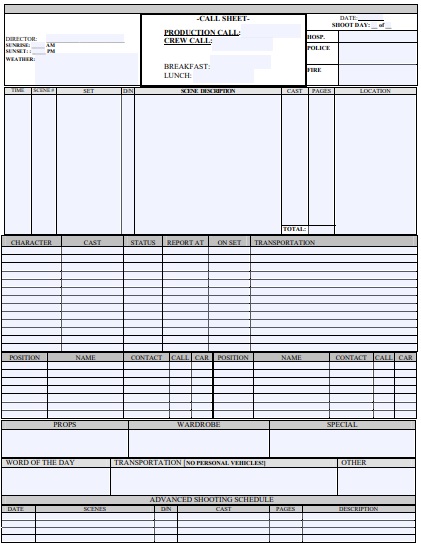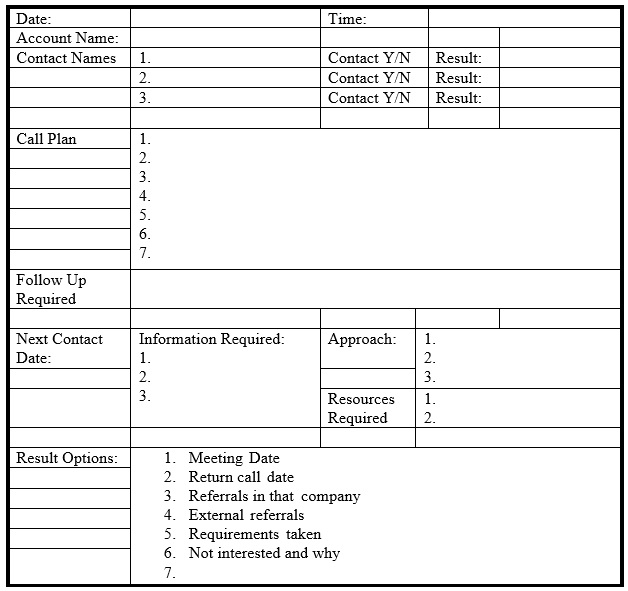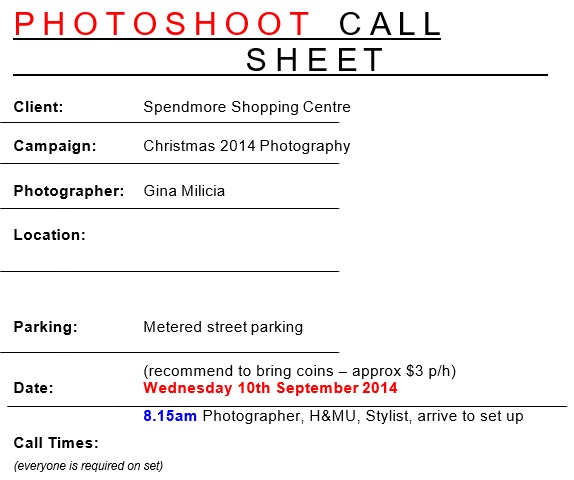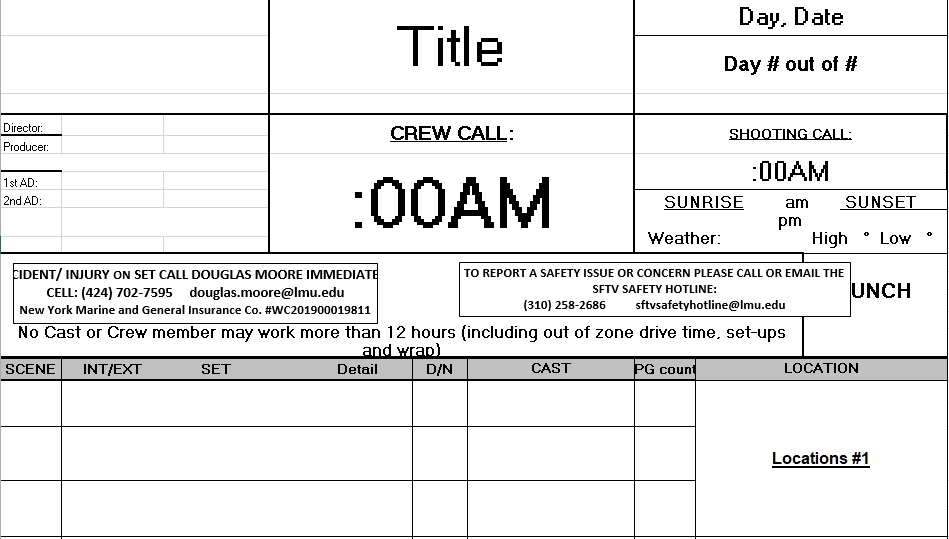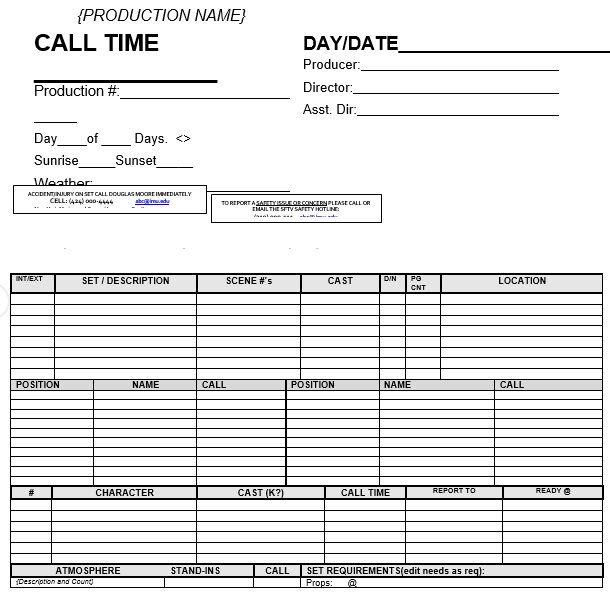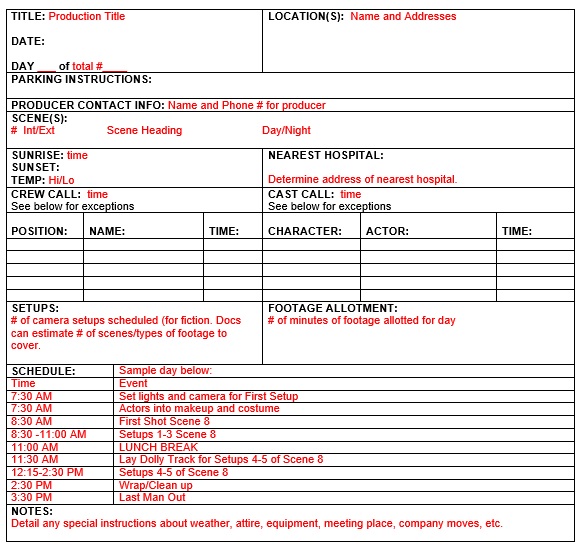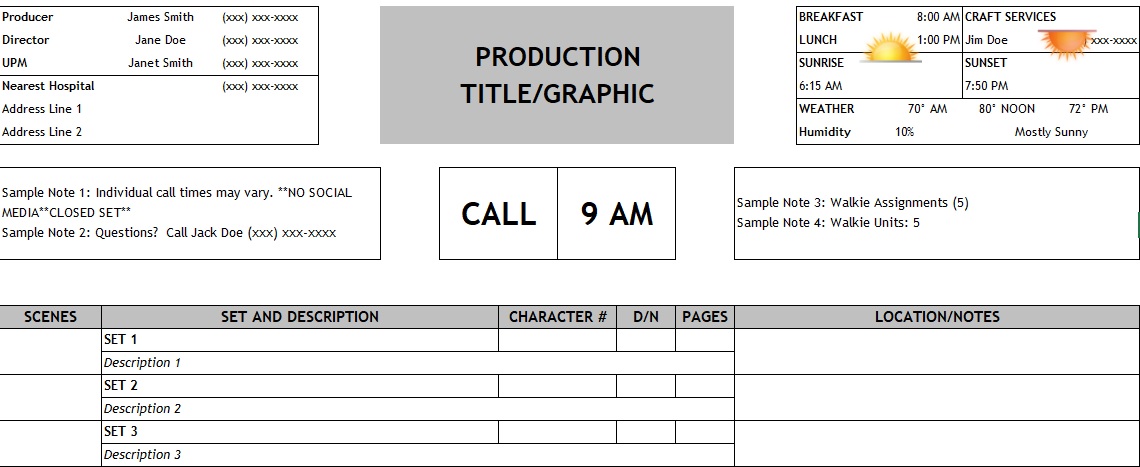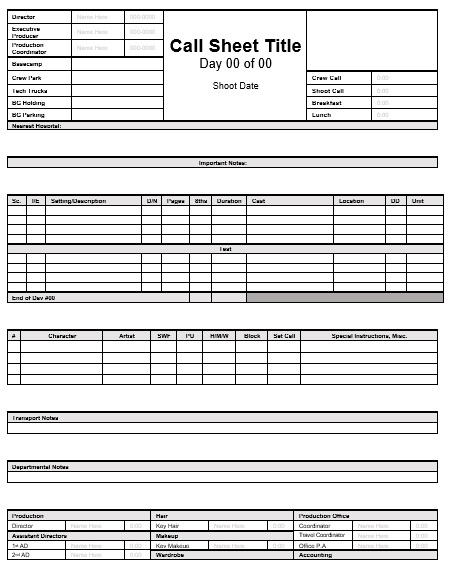A call sheet template is used by the people who work in the film industry to schedule their work. It is an essential production document. It contains all of the information required in a photo or film shoot. Furthermore, the success of a project is based on how well-written and well-explained your film call sheet is.
Table of Contents
Different sections of a production sheet:
A call sheet consists of following different sections;
- The first section includes all important production information.
- The second section contains the time and location of the shoot. You can also include additional information here like local weather forecasts, the location of the nearest hospital, etc.
- The third section has the details of the shoot. The information mention is this section is organized in a schedule for shooting. This provides information like the duration of the shooting and what needs execution in every scene.
- The fourth section includes the people that are involved in the shooting. It also covers information that gets organized through a crew grid. You may also like Performance Dashboard Excel for Call Center Report.
On a call sheet, what does SWF mean?
There is a status column on a simple call sheet template. It indicates the length of the talent’s job on a project with several days. Let us below understand the meaning of the letters S, W, H, F in this column;
- SW (Starts Work): it indicates the talent’s first day.
- W (Works): it indicates the talent is in the midst of their job
- WF (Work Finished): it means the talent’s last day on the job
- SWF (Start Work Finished): it means the talent works for one day only.
- H (Hold): the talent won’t work for that day.
What to include in a call sheet?
Below is a precise description of some key components that must find in a call sheet;
VIPs contact details:
At the top-left corner of the call sheet, there is a logo of the production company, the office details of the company, and the contact details of the VIPs. This section is used as reference for the talents or crew members who want to get in touch with someone.
Title of the production:
At the top of the page, there must be the name of the production along with the crew call. It is an important section where you can highlight any special announcements.
The dates, days, and weather condition:
Enter the date and the days of the shoot near the top of the film call sheet. Weather condition of shooting place should be present including high or low expected temperatures, times of sunrise or sunset and other important details.
Shooting address:
Write the address of shooting sites at the top-half of the production sheets. If there is more than one location then mention these with numbers. Also, include the address of the parking lot. However, it is often different from where the shooting takes place. Additional notes about driving, parking, shuttles or directions to and from the location should also be included.
The size of production doesn’t matter it may be small or big but you have to include the address of the closest hospital from each of the locations. If serious emergency occurs then people usually look for a hospital location through a call sheet.
Daily shooting schedule:
It is the most important part of the call sheet to indicate what you would do for each shooting day. Typically, an independent film can have as many as 5 pages each day. It also includes what the time you serve meals. On the basis of union rules, you have to serve a complete meal no more than 6-hours. Sum up all the pages at the bottom to receive a total page count for the day.
Talent list:
The talent list indicates the call times of talents. This section provides the following details;
- Talent’s name
- ID number
- Character name
- Call times
- Status
Background and Stand-Ins:
It contains the list of extras which features a headcount of all the extra “types.” This will work for that day along with their call times. This sheet has information for the production unit, wardrobe, make-up, assistant directors, and catering.
Department notes:
This section highlights specific notes for departments that can include the following;
- Wardrobe
- Important props in a scene
- A note about a complicated writing setup
- A reminder for when you has to bring something essential to the set
Crew list:
For a specific day, a crew list contains the names of all the crew members in attendance. Here you have to include their names, call times, and positions. In addition, some productions also include the contact details of the crew members.
Advanced schedule:
This is generally an initial shooting schedule for the following day and an optional addition and provides everyone time to prepare.
Walkie-talkie channels:
In the general notes or footer of the call sheet, you can see this channel. For the usage of channels, there are some industry standards. They can differ by production.
Some tips for using a call sheet:
Follow the below tips to use a call sheet effectively;
- If you have many projects going on simultaneously then create one folder for each shooting day. Inside the folder, enter everything you need for the day.
- You should back up your files regularly because sometimes computer gets crash and you might lose all your data. To avoid such situations, it’s better to make it a habit to backup your files on daily basis.
- You should send only one call sheet each day because in high-flying world of film production things are constantly subjected to change.
- Keep checking the weather and include the latest forecast on your call sheet. Check the weather for the week or for the next three days and again check it in the morning on the day of the shooting.
- Always send your call sheet in a PDF format. If you send it in different format other than a PDF then there is risk of having someone editing it and sends out a different version.
- Before sending it, proofread it thoroughly and check carefully names, dates, times, and other details. You just require a few minutes to do this.
- In the end, ensure that all of the crew chiefs feel happy with it. After making the final changes, take the approval from them and send it out. You should also check Customer Database Templates.
Mistakes to avoid while making call sheet:
You should avoid the following mistakes while creating a call sheet;
- The biggest mistake is no proofreading your call sheet. You should thoroughly proofread your document to check spelling and grammatical errors.
- When you don’t check your daily details. It is important to check your details regularly in order to make sure that every information is correct.
- You may confuse the people by sending them more than one call sheet a day.
- Not save your call sheet in a secure place where there is no chances of its misplacement.
Conclusion:
In conclusion, a call sheet template should include all the necessary details that you have to know during shooting a project. It is considered as the most important document in a film or photo production.
Faqs (Frequently Asked Questions)
Before a shoot to the film crew, a call sheet in film productions should send by the first assistant director.
The different types of call sheets are;
1- Movies call sheets
2- TV call sheets
3- Music video call sheets
4- Photoshoot call sheets
5- Commercial shoot call sheets
You can use the call sheet software and call sheet templates for creating and using call sheets.

